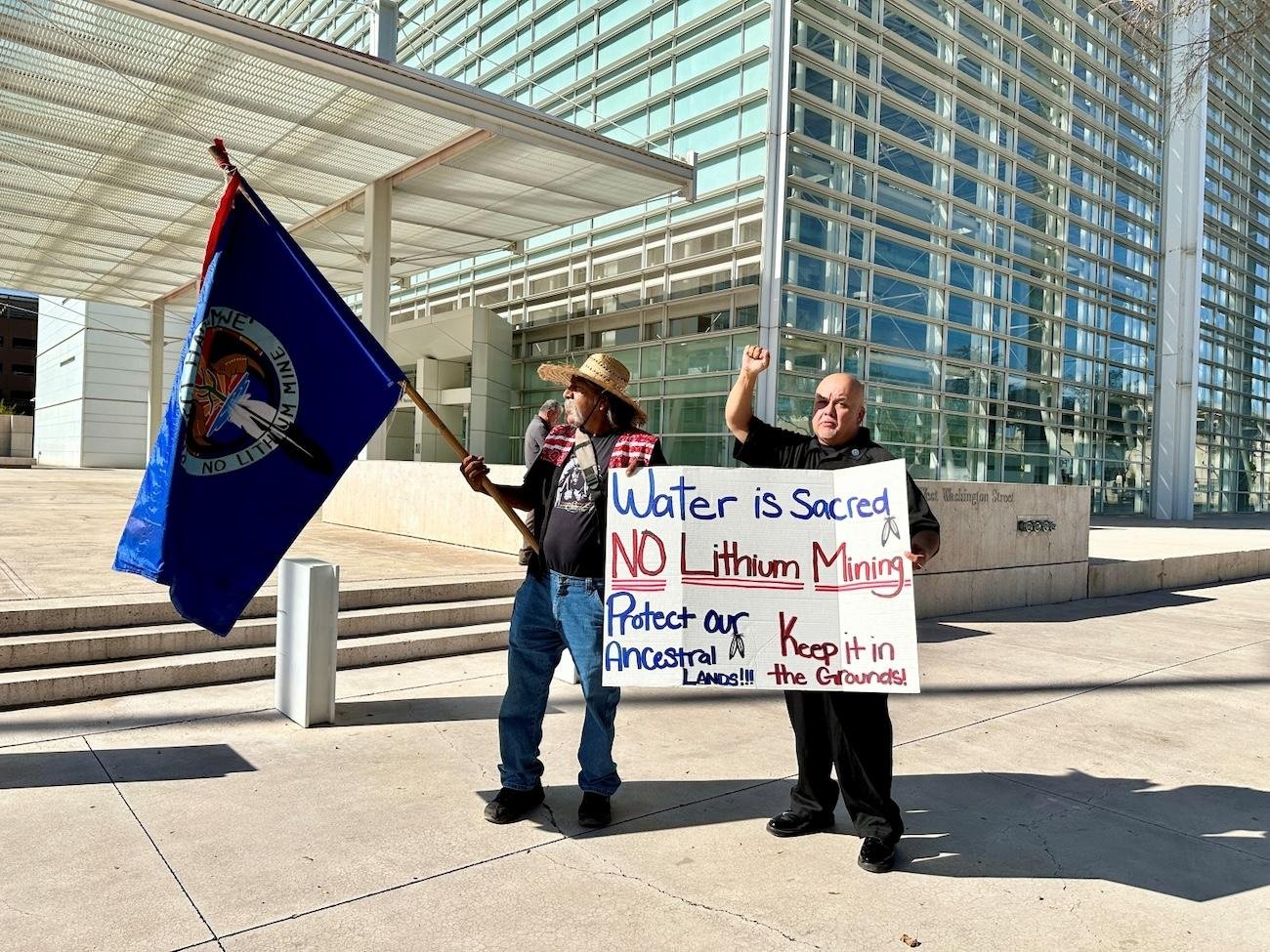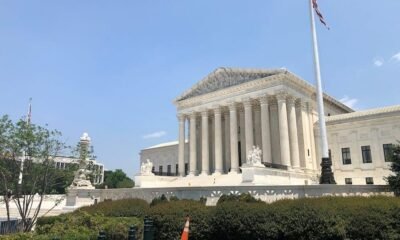Business
Hualapai Tribe Battles to Extend Lithium Drilling Ban Protecting Sacred Ground

The Hualapai Tribe is engaged in a legal battle to halt the proposed Big Sandy Valley Lithium Exploration Project, which they argue threatens their sacred sites, particularly the revered Ha’Kamwe’ spring. Tribal Spiritual Leader Frank Mapatis emphasizes the spiritual significance of Ha’Kamwe’, where he conducts purification and healing ceremonies. The tranquility of the area is paramount; any noise could disrupt his communion with the land and water.
Mapatis expressed deep concern regarding the potential impact of exploratory drilling on traditional practices. “It would stop me from doing ceremony,” he stated during a recent testimony. He fears that drilling will harm the sacred landscape and sever its connection to the Hualapai way of life. “It wouldn’t be as effective in other areas,” he highlighted, indicating that alternative locations lack the spring’s unique healing properties.
Ha’Kamwe’ holds a pivotal role in Hualapai culture, featured prominently in their songs and stories, enriching their ties to the land. The tribe claims that the historic flow and temperature of the spring are critical for their traditional practices. During a recent preliminary injunction hearing at the U.S. Federal District Court in Phoenix, Mapatis was among several tribal members who voiced their objections to the project.
The legal proceedings come after a federal judge temporarily halted the drilling activities, following a lawsuit filed by the tribe against the Bureau of Land Management (BLM). The tribe asserts that the project, which permits drilling at over 100 sites across public land, violates both the National Environmental Protection Act and the National Historic Preservation Act. The lawsuit demands that BLM comply with protective measures for cultural properties, including Ha’Kamwe’.
Concerns over the project have been raised repeatedly by the tribe, leading to the restraining order aimed at preserving the sanctity of their lands. The exploration project is significant, involving the potential drilling of 131 locations to assess the viability of lithium mining—a resource in high demand yet fraught with environmental implications.
Community members rallied outside the courthouse, underscoring their shared commitment to preventing the desecration of Ha’Kamwe’. Ivan Bender, a tribal member, articulated the sentiment: “That spring has a life of its own. The water source we’re trying to protect is part of our sacred waters.”
During the hearing, testimonies underscored the potential adverse effects of the project on Hualapai culture. Ka-voka Jackson, director of the Hualapai Department of Cultural Resources, testified on how the area serves as a vital source for traditional practices. She expressed fears that drilling would generate disturbances that could irreparably damage the spring and diminish its spiritual significance.
Despite these concerns, BLM representatives maintained that the environmental assessments conducted prior to project approval indicated insufficient harm. They claimed that any disturbances would be temporary and manageable. However, Wright G. Wright, a hydrologist supporting the tribe, countered this argument, emphasizing that the groundwater system feeding into Ha’Kamwe’ is delicate and highly susceptible to disruption.
At the conclusion of the hearing, Judge Diane Humetewa requested further briefings from all parties to clarify their positions on the injunction requested by the tribe. She expressed the need to examine BLM’s adherence to NEPA provisions concerning historical preservation and the environmental impact of the project.
Amid these proceedings, Arizona Attorney General Kris Mayes submitted an amicus brief in support of the Hualapai Tribe, accentuating the critical nature of protecting Ha’Kamwe’. “The sacred Ha’Kamwe’ spring has sustained the Hualapai people for generations,” he stated, calling for a comprehensive review of the project’s potential impacts.
The court’s upcoming decision will not only affect the Hualapai Tribe but also set a precedent for how sacred lands are treated in the face of development. As the community awaits the judge’s ruling, their resolve to protect their heritage remains steadfast.


















